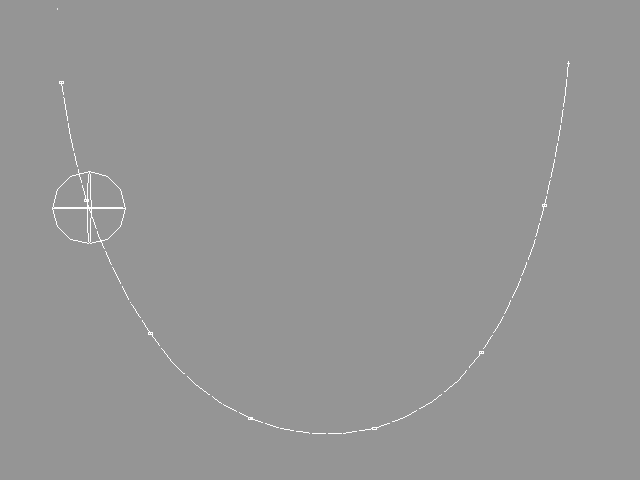6.9.4 Moving Objects along a SkeletonAs you already know, the VPHS tag associated to a target object defines where the target lies on the skeleton . However , it is possible to define this value dynamically using the tag SFOR. This means you can change the position of the target during the animation just by writing the formula which refers to the time! So, let's test this by creating "Move along a Path" animation based on the skeleton method. 1. Create a sphere (a target object). 2. Create a SIMPLE SKELETON method object at the same level. 3. Create a B-Spline curve under the method object. 4. Selecting the sphere, then select the menu Modify/Properties/Tags. Click ADD gadget and then enter the following tag string: SFOR x=t Hit return and select OK. Play the animation and your target object will move along the skeleton, because its position on the skeleton is directly defined by the time. |
 YouTube Figure T6-28: A Sphere Moving along a Skeleton. |
|
Well, we could do this simply by using a PATH method, too. However, there is a big difference between these two implementations. The PATH defines relative motion for targets whereas SKELETON defines absolute position. This means that you can move the curve used with the PATH method without changing the motion of the targets (because it still defines equal relative motion), but if you move the skeleton curve, targets follow a different route because they are always pulled back to to the skeleton. So, lets analyze what made the sphere actually move along the skeleton. The formula "x=t" assigned the current time to the variable "x". The skeleton method uses this variable to redefine the value of VPHS tag. Actually, the parameter space is three dimensional and also variables "y" and "z" are defined, but because we used a B-Spline curve, only the first dimension is relevant. A bit later we will show you how to use freeform meshes as skeletons, and then we need two dimensions (variables x and y) to define a position for the target (for full description of variables and methods, see the Reference section). All right, lets practice a bit more, by creating a formula which is bit more complex and produces a more interesting motion. |
| ghh don'tpanic |